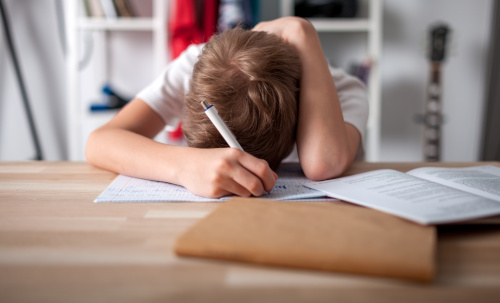A recent study found that the global pandemic and its accompanying social and cultural changes have significantly impacted the mental health and stress of children and teens. And the CDC warns that levels of stress and anxiety in children continue to rise. Yet the science of how stress affects a student’s ability to learn and excel in the classroom–especially when it comes to reading comprehension–is rarely discussed.
Teachers who want to support optimal reading comprehension must equip themselves with a deeper understanding of why stress is so harmful to students’ reading, and what they can do about it.
The growing problem of student stress
Not only are stress rates rising in children, but researchers are finding that stress and anxiety (like other negative emotions) are actually contagious amongst kids. Simply observing another person in stress has been shown to increase the biomarkers of stress in yourself, and the contagious elements of your emotions start even earlier than you may think: One study found that children were able to “catch” their mother’s stress levels.
According to the U.S. National Library of Medicine, some of the most common triggers of stress in children include:
- Pressure about grades or schoolwork;
- Managing all of their different commitments, from school to work to play; and
- Problems in the schoolyard, such as bullying or peer pressure.
On top of this, if you as a teacher are stressed–and nearly half of teachers report high daily stress–this can also impact your students’ levels of stress.
How stress makes reading and reading comprehension harder
Two decades of research have documented the negative impacts that stress has on your students’ brains. When children are stressed, they experience profound, negative changes in their brain structure and brain chemistry. For example, stress disrupts how their neurons communicate, and high levels of the stress hormone cortisol have been shown to damage the parts of the brain involved in learning.
This results in:
- Difficulty concentrating;
- A hard time focusing;
- Poor retention of new information; and
- Difficulty remembering things they’ve learned in the past.
It’s no wonder that students “blank out” when they’re sitting down for a test, or have hard time focusing when they’re faced with a new and especially stressful challenge (such as advanced mathematical concepts, learning to read, etc.). And while stress is a negative factor for all students, it is even more problematic for students who experience learning challenges like dyslexia or ADHD.
Tools to help students better manage classroom stress
Because of the wide-reaching consequences of stress on reading comprehension and all other forms of learning, teachers need to be equipped to help their students better navigate a stressful classroom experience. This doesn’t mean teachers need to bear the burden of playing school psychologist, but it does mean knowing what to look for, and knowing how to structure learning to help students be resilient to stress.
1. Model stress resilience yourself
Take care of yourself first—your stress levels, mental health, and physical health—to ensure you aren’t bringing unnecessary emotional baggage into the classroom each morning. Of course, stress is inevitable when you’re a teacher juggling multiple priorities. That means also modeling healthy stress resilience techniques in the classroom, and perhaps inviting your students to participate with you by:
- Doing deep breathing exercises;
- Engaging in mindfulness practices, like a 2-minute meditation; and
- Taking a break and moving your body, even if it means simply walking around your classroom for a minute to get your blood flowing.
2. Introduce routine into the classroom
Having a routine helps anchor and ground us in times of change or stress.
Consider ways to structure your daily classroom activities so that they follow a regular rhythm or schedule. Then, when you’re introducing a new concept, a shift in curriculum, or other things that might create stress for your students, the routine helps their brains to remain more balanced and less prone to the natural fight-or-flight response.
You might also want to consider engaging in calming techniques or stress-releasing exercises before embarking on something you know will trigger your students’ anxiety. For instance, an elementary school teacher might engage in a fun and relaxing music session as a break between teaching and doing a short exam.
3. Watch for signs of student stress
When students feel stressed, they often engage in survival techniques that look like defensiveness or avoidance. For example, you might notice an unusual number of students requesting bathroom breaks or hall passes right before a test, or you might find a higher rate of “sick” students who need to go home early on the day when students need to read in front of the classroom.
Less stress equals better learning
Monitoring these classroom trends can help you know when you may need to increase your focus on stress-reducing strategies like music, exercise, or quiet time. Student performance and excellence are never about the one issue (such as the lesson, the concept, or the exam) but about the overall, holistic experience. Teachers who watch for signs of stress and take proactive measures to help their students return to a calm, relaxed state tend to see better academic results.
- The evolving requirements of a K-12 school network - April 24, 2024
- A bungled FAFSA rollout threatens students’ college ambitions - April 24, 2024
- How digital tools and AI can enhance social studies - April 23, 2024

